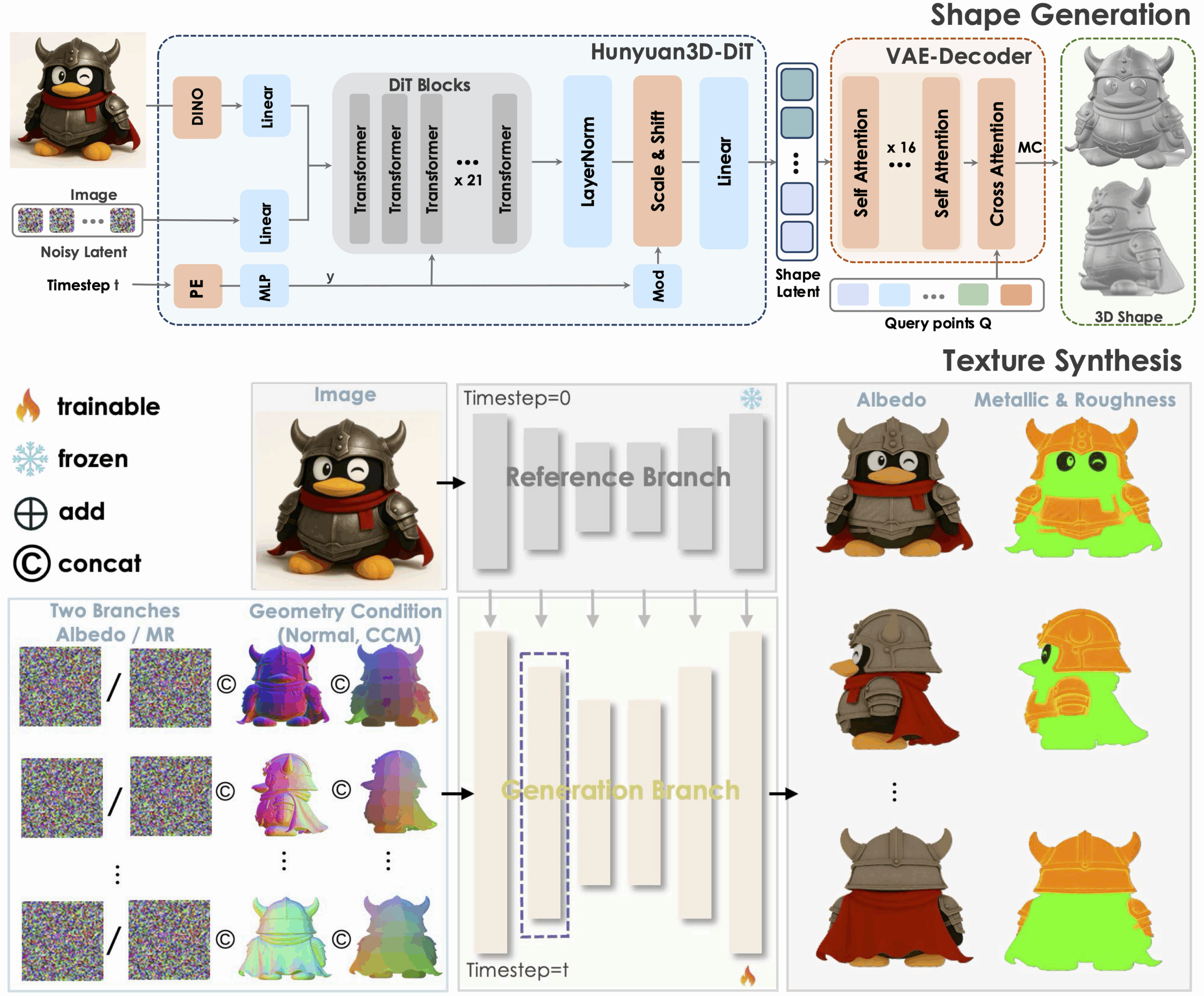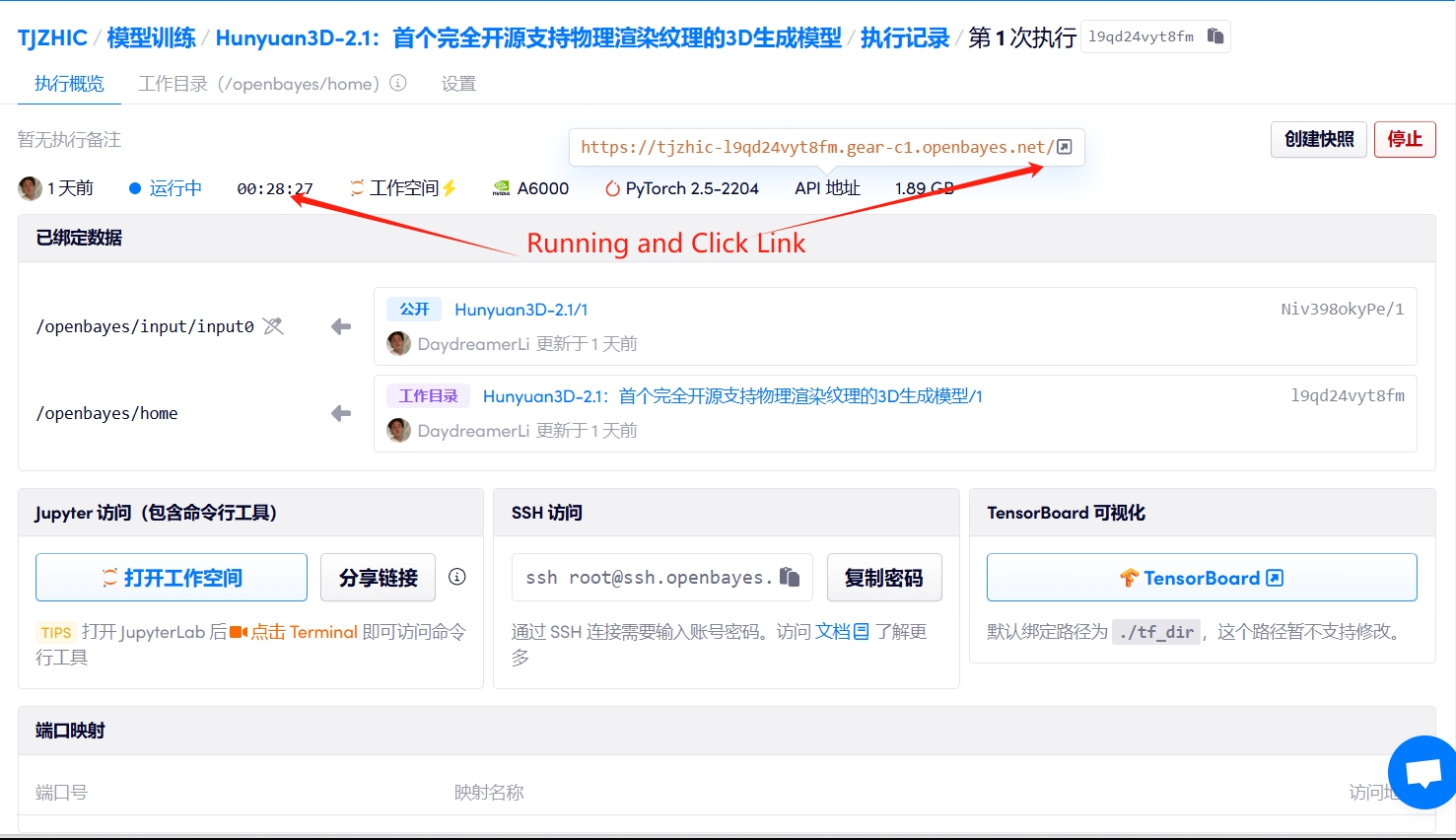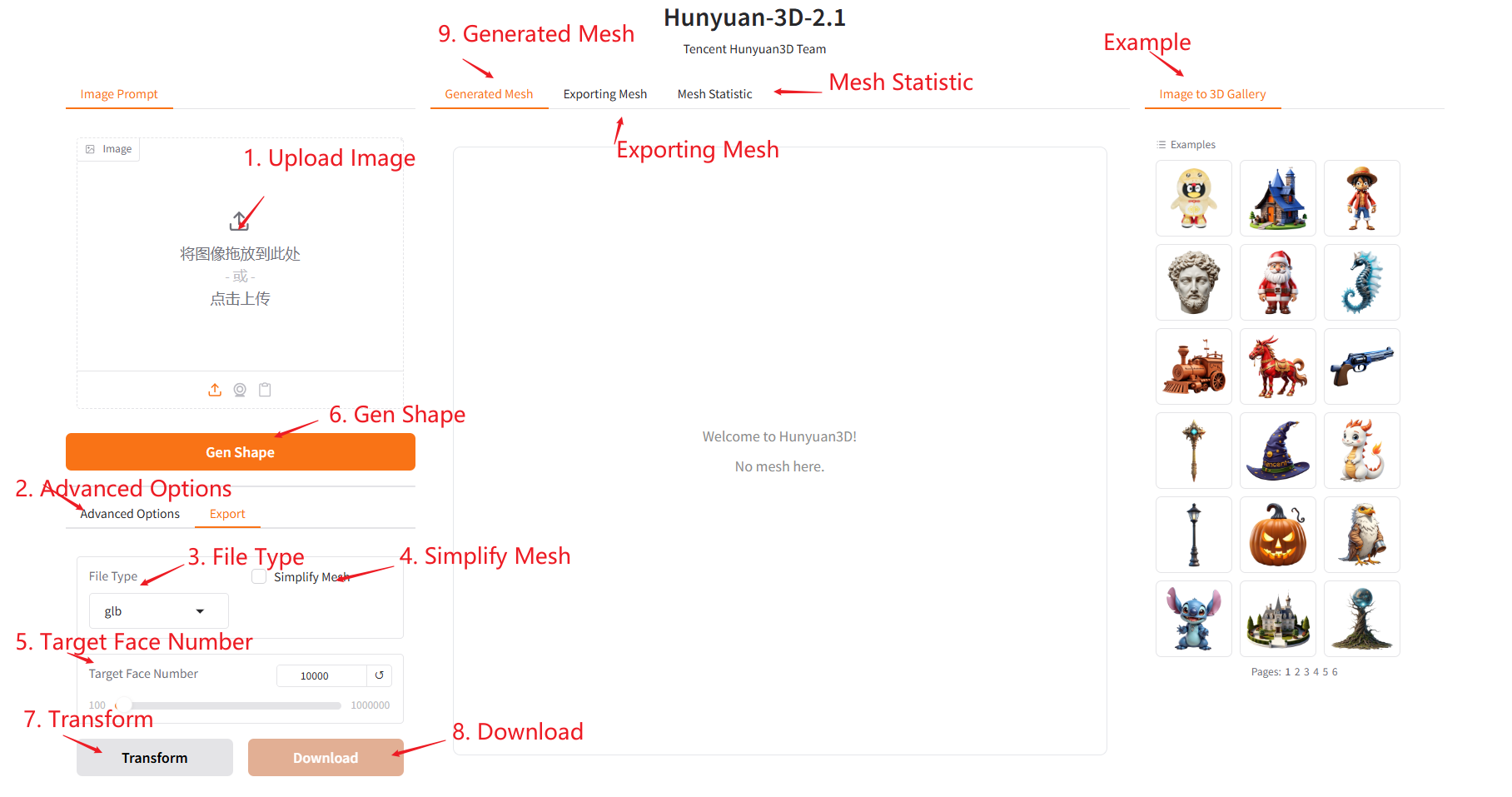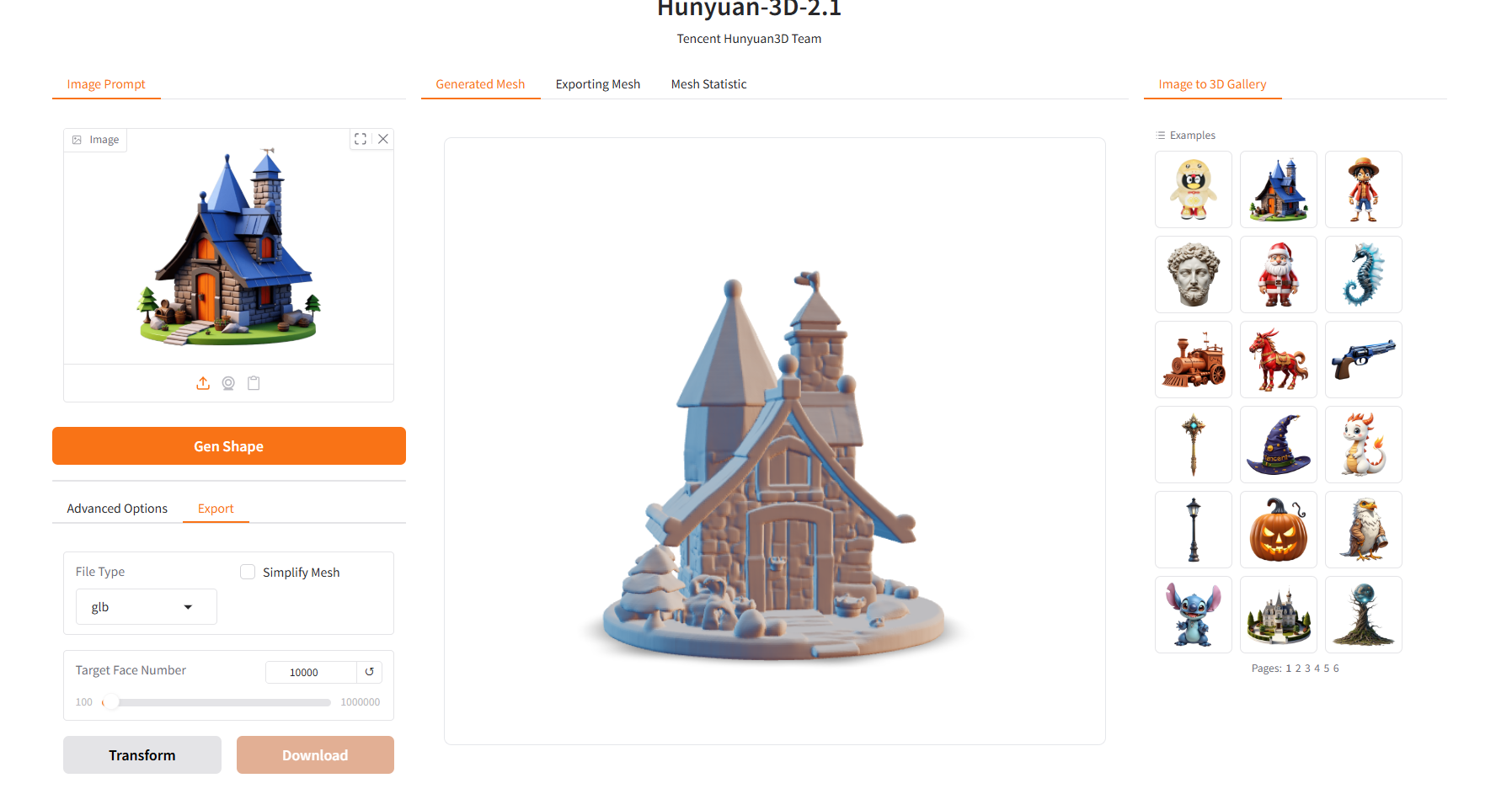Command Palette
Search for a command to run...
Hunyuan3D-2.1: 3D Generative Model Supporting Physical Rendering Textures
1. Tutorial Introduction

Tencent Hunyuan3D-2.1 is an industrial-grade open source 3D generation model released by the Tencent Hunyuan team on June 14, 2025. It is a scalable 3D asset creation system. It promotes the development of cutting-edge 3D generation technology through two key innovations: a fully open source framework and physically based rendering (PBR) texture synthesis. The first material generation model that supports physically based rendering, a complete material system based on physical laws such as diffuse reflection, metalness, normal maps, etc., to achieve movie-level light and shadow interaction for materials such as leather and bronze, and meet the production-level precision requirements of game assets, industrial design, etc. At the same time, the data processing, training inference code, model weights and architecture are fully open to support community developers to fine-tune downstream tasks, provide a reproducible baseline for academic research, and reduce the cost of repeated development for industrial implementation. The relevant paper results are "Hunyuan3D 2.0: Scaling Diffusion Models for High Resolution Textured 3D Assets Generation", has been accepted by CVPR 2025.
The computing resources used in this tutorial are a single RTX A6000 card.
2. Effect display

3. Operation steps
1. Start the container

2. Usage steps
If "Bad Gateway" is displayed, it means the model is initializing. Since the model is large, please wait about 3-4 minutes and refresh the page.

Specific parameters:
- Target Face Number: Specifies the maximum number of triangle faces to generate the 3D model.
- Remove Background: Whether to remove the background, automatically detect and clear the image background (such as solid color, cluttered scenes), and only keep the outline of the main object.
- Seed: Controls the randomness of the generation process.
- Inference Steps: Controls the number of sampling iterations of the Diffusion Model.
- Octree Resolution: Defines the grid accuracy level for 3D space segmentation.
- Guidance Scale: Controls the strength of the constraints imposed by the text description on the generated results.
- Number of Chunks: Split large 3D rendering tasks into sub-chunks that are processed in parallel to avoid video memory overflow (OOM).
result

4. Discussion
🖌️ If you see a high-quality project, please leave a message in the background to recommend it! In addition, we have also established a tutorial exchange group. Welcome friends to scan the QR code and remark [SD Tutorial] to join the group to discuss various technical issues and share application effects↓

Citation Information
The citation information for this project is as follows:
@misc{hunyuan3d22025tencent, title={Hunyuan3D 2.0: Scaling Diffusion Models for High Resolution Textured 3D Assets Generation}, author={Tencent Hunyuan3D Team}, year={2025}, eprint={2501.12202}, archivePrefix={arXiv}, primaryClass={cs.CV} }@misc{yang2024hunyuan3d,
title={Hunyuan3D 1.0: A Unified Framework for Text-to-3D and Image-to-3D Generation},
author={Tencent Hunyuan3D Team},
year={2024},
eprint={2411.02293},
archivePrefix={arXiv},
primaryClass={cs.CV}
}
Build AI with AI
From idea to launch — accelerate your AI development with free AI co-coding, out-of-the-box environment and best price of GPUs.